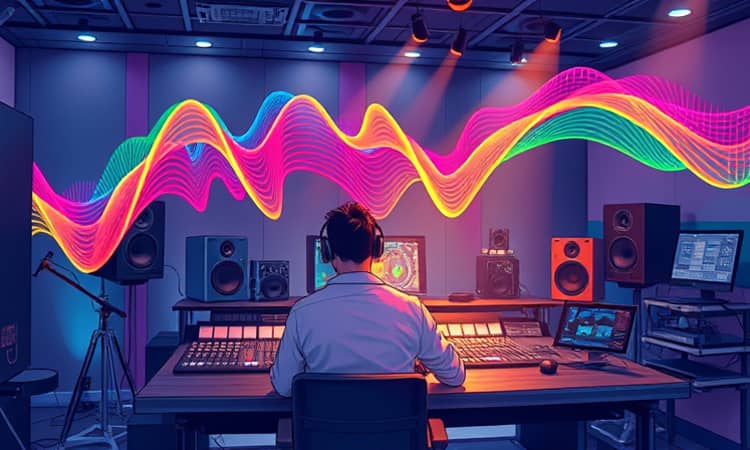Audio editing and mixing blend technical precision with artistic vision, transforming raw recordings into compelling soundscapes. Whether you’re producing a podcast, scoring a film, or crafting music, mastering best practices ensures clarity, depth, and emotional impact. This guide walks you through foundational techniques, workflow optimizations, and advanced methods to elevate every project.
Core Editing Techniques: Building Your Foundation
Before applying creative effects, focus on precise edits that shape the raw material. Clean, organized audio allows processors to work more effectively, setting the stage for a professional-sounding mix.
- Trimming and cutting unwanted sections of audio recordings
- Applying fades to create smooth transitions
- Performing volume leveling for consistent loudness
- Reducing noise to eliminate background interference
- Working with multiple tracks simultaneously
- Layering audio tracks to create a fuller sound
Once you master these basics, every subsequent step becomes more intuitive. A well-edited session lets you focus on creativity rather than technical cleanup.
Essential Steps in the Mixing Process
Mixing transforms individual tracks into a balanced, engaging final product. A methodical approach helps you maintain control over levels, space, and timbre.
- Setup and Preparation: Calibrate your monitors, set buffer sizes, and organize tracks by type.
- Balance and Basic Adjustments: Adjust panning, gain staging, and stereo placement for dimensional clarity.
- Apply Processing and Effects: Use EQ, compression, reverb, and delay with intention and restraint.
- Fine-Tuning and Finalization: Automate dynamics, compare to reference tracks, and sculpt details.
During setup, create a template with routing and color-coded tracks. When balancing, monitor in mono to detect phase issues early. Always save incremental versions to safeguard your progress.
Advanced Techniques to Elevate Your Mix
Once you’ve mastered the essentials, these advanced methods add depth and polish. Approach each technique critically to preserve musicality and avoid unintended artifacts.
Precision parametric equalization techniques allow you to carve space for each instrument. By pinpointing problem frequencies, you maintain clarity without sacrificing warmth.
Creative sidechain compression setups can introduce rhythmic pumping or dynamically manage competing elements like kick and bass. This fosters a tighter low-end foundation with unrivaled groove.
Pay attention to critical mid-range frequency management, where vocals, guitars, and many instruments reside. Subtle boosts or cuts around 1–5 kHz ensure presence without harshness.
Avoid over-processing that degrades audio quality. Regularly bypass plugins to compare processed signals against the dry source and confirm each effect enhances the mix.
Incorporate parallel processing for drums or vocals. Blending a heavily compressed duplicate track with the original can add punch and sustain without flattening dynamics.
Choosing the Right Tools for the Job
Your choice of software and hardware shapes both workflow and sonic character. Invest in tools that align with your creative goals and budget.
High-quality recordings begin at the source. Invest in microphones that suit your application and environment.
- Quality microphones like the Audio-Technica ATR-2100 for versatile use
- Accessories: boom arms, shock mounts, foam windscreens, and pop filters
Proper microphone placement and room treatment reduce unwanted reflections and background noise, setting a solid foundation for post-production.
Optimizing Your Workflow and Environment
An efficient workflow accelerates projects and preserves creative momentum. Customize your workspace to support focused editing and mixing sessions.
Use session templates with routing, track labels, and inserted effects. This pre-built structure reduces setup time and keeps you in the creative zone.
Address room acoustics with simple treatments. Position foam panels at first reflection points, use bass traps in corners, and consider diffusers or bookshelves to break up standing waves.
Leverage macros and keyboard shortcuts within your DAW to streamline repetitive tasks. This can make audio workflows twenty times faster, letting you spend more time on artistic decisions.
Bringing It All Together: From Amateur to Professional
Progress stems from consistent practice and critical listening. Reference high-quality tracks to gauge your mix, but trust your ears when making final judgments.
Maintain dynamic range rather than chasing loudness. Thoughtful contrasts between soft and loud sections convey emotion more effectively than uniform volume.
Collaborate and seek feedback from peers. A fresh perspective can uncover issues masked by listener fatigue and spark new creative ideas.
Plan for mastering early, exporting stems with proper headroom and metadata. Clear communication with mastering engineers ensures your vision translates to the final medium.
Every project brings unique challenges and opportunities for growth. Embrace experimentation, remain patient during fine-tuning, and celebrate the transformation of raw recordings into polished audio masterpieces.
By blending technical precision with artistic intuition, you’ll consistently deliver mixes that captivate audiences, stand up to industry standards, and showcase your creative voice.
References
- https://helpx.adobe.com/premiere-pro/using/bestpractices-audio.html
- https://www.premiumbeat.com/blog/mixing-professional-sounding-audio/
- https://jwsoundgroup.net/index.php?%2Ftopic%2F24539-editing-audio-workflow-what-processes-to-use-and-in-what-order%2F
- https://mixingmonster.com/basic-audio-editing-techniques/
- https://www.descript.com/blog/article/how-to-mix-audio
- https://unison.audio/mixing-tips/
- https://www.smartpassiveincome.com/guides/how-to-start-a-podcast-tutorial-pat-flynn/
- https://www.avid.com/resource-center/how-to-edit-audio














